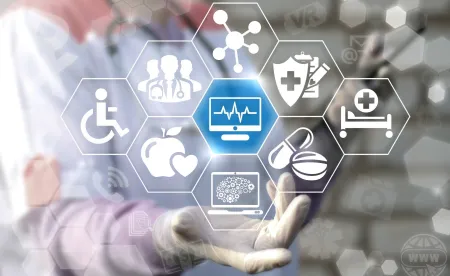On March 20, 2020, the US Food and Drug Administration announced updates to its enforcement policy on the use of non-invasive remote monitoring devices, specifically for uses designed to support patient monitoring during the Coronavirus (COVID-19) public health emergency. This temporary loosening of restrictions—which will be in effect only for the duration of the current emergency—is expected to increase physician access to important physiological data and facilitate patient health management without requiring in-clinic visits or in-hospital visits.
IN DEPTH
On March 20, 2020, the US Food and Drug Administration (FDA) announced its Enforcement Policy for Non-Invasive Remote Monitoring Devices Used to Support Patient Monitoring During the Coronavirus Disease-2019 (COVID-19 ) Public Health Emergency (Policy). Under the Policy, FDA intends to allow manufacturers of certain FDA-cleared non-invasive, vital sign-measuring devices to modify the technology, claims or functionality to enable remote monitoring, remote access and home use without obtaining an additional clearance for those modifications or expanded indications. FDA also clarified that it does not intend to regulate certain software applications that use established public health or clinical guidelines to help healthcare providers triage potential COVID-19 symptoms or evaluate symptom progression for patients previously diagnosed with COVID-19.
The agency’s stated goal is to “increase access to important physiological data without the need for in-clinic visits” and to “facilitate patient management by health care providers while reducing the need for in-office or in-hospital services.” FDA believes these measures will ease burdens on healthcare facilities and reduce the risk of exposure to the virus. By describing the Policy as an “enforcement policy” and identifying actions that it would not find objectionable, the agency is using its “enforcement discretion” to decline to enforce certain medical device requirements in defined circumstances.
As with other enforcement discretion policies, FDA’s criteria for non-enforcement reflects a risk-based approach. FDA policy attempts to balance the benefits of decreasing potential COVID-19 exposure through increased remote monitoring with the potential consequences of limited FDA-oversight of post-market modifications.
Non-Invasive Monitoring Devices
To qualify for enforcement discretion, the devices must (1) be non-invasive monitoring devices; (2) be previously cleared by FDA, unless they were previously 510(k)-exempt; and (3) not include any modification that creates “undue risk.” The Policy applies to the following devices:
-
Clinical electronic thermometer
-
Electrocardiograph (ECG)
-
Cardiac monitor
-
ECG software for over-the-counter use
-
Pulse Oximetry (SpO2)
-
Non-invasive blood pressure (NIBP)
-
Respiratory rate or breathing frequency
-
Electronic stethoscope
While the agency does not explicitly state that the Policy applies only to Class II, 510(k)-cleared devices, the listed examples only include Class II devices and the policy includes several references to “FDA-cleared indications.” Moreover, FDA’s description of non-enforcement focuses on modifications to functionality, technology, labeling or indications for use that typically require premarket clearance in the absence of enforcement discretion.
The third criteria for enforcement discretion—undue risk—will likely require careful consideration and calibration on the part of manufacturers. FDA states that a modification does not create undue risk in the following scenario: (1) the device is intended for the purpose of displaying, printing or analyzing the physiological parameter(s) measured by the device; (2) the device is intended for supporting or providing adjunctive (i.e., supporting) recommendations to a healthcare professional or patient about prevention, diagnosis or treatment of COVID-19 or co-existing conditions; and (3) the HCP or patient must be able to independently review the basis for any diagnostic or treatment recommendations.
FDA also provides labeling guidelines for any modified devices, including:
-
A clear description of available data on the modifications, including device performance, method of determining any diagnostic or treatment recommendations, and potential risks.
-
A prominent notice that recommendations are adjunctive and should not be the sole or primary basis for preventing, diagnosing or treating COVID-19 or co-existing conditions.
-
Information on use conditions (e.g., whether the device is intended for spot-checking, trend monitoring or continuous monitoring).
-
A statement about changes that have not been cleared by FDA and delineating
-
FDA-cleared indications and claims from those that are not FDA-cleared.
-
For devices previously cleared for use in a healthcare facility only, adequate instructions for use in the home setting using lay terminology.
Clinical Decision Support Software
In the Policy, FDA notes that clinical decision support (CDS) software can be useful for monitoring patients with COVID-19 or co-existing conditions. FDA emphasized that the current medical device exemptions under Section 3060(a) of the 21st Century Cures Act (Cures Act) still apply for many health-related software, including electronic health records and other categories of CDS tools that are not intended for clinical image or in vitro signal acquisition, processing analyses or diagnoses . However, FDA specifically identifies the following four examples of CDS tools for COVID-19 that are not considered medical devices:
-
“Software that uses a patient’s diagnosis to provide a healthcare provider with current practice treatment guidelines for COVID-19 or co-existing conditions, and provides the source of the guidelines”
-
“Software that provides healthcare providers with recommendations on the use of a medical device to treat a patient with confirmed or suspected COVID-19 that are consistent with the FDA-required labeling or that are described in other sources, such that the healthcare provider does not rely primarily on the software’s recommendation”
-
“Software that compares patient signs, symptoms, or results with available practice guidelines (institutions-based or academic/clinical society-based) to recommend condition-specific diagnostic tests, investigations, or therapy or triaging patient care. The practice guidelines are described as the basis for the recommendation and provided for the health care professional to review, such that the healthcare provider does not rely primarily on the software’s recommendation”
-
“A software function that is intended to analyze medical information about a patient diagnosed with COVID-19, such as temperature and heart rate, to provide recommendations to the health care professional for opportunities for additional monitoring or care, and the basis for the recommendation, such as CDC guidelines, is provided so that the health care professional does not rely primarily on the recommendation”
The key features that distinguish these non-device COVID-19 CDS examples appear to be: (1) (with one possible exception), the tools are intended for use with patients who already have a COVID-19 diagnosis; and (2) the tools are intended for healthcare provider use only. Unlike the other examples, the third example, which describes a symptom comparison and triaging tool, does not specify that such tools are only for use with previously diagnosed COVID-19 patients. The Policy describes these as examples, rather than a definitive list. Therefore, developers should analyze proposed COVID-19 CDS tools in light of the Cures Act statutory language and FDA’s previously issued guidance.
The agency reiterated the policy will only be in effect for the duration of the COVID-19 public health emergency. Manufacturers should consider proactive design protocols, notification timelines, and quality measures to reverse or terminate modifications or obtain relevant clearances for such modifications once the COVID-19 emergency has ended.






 />i
/>i
